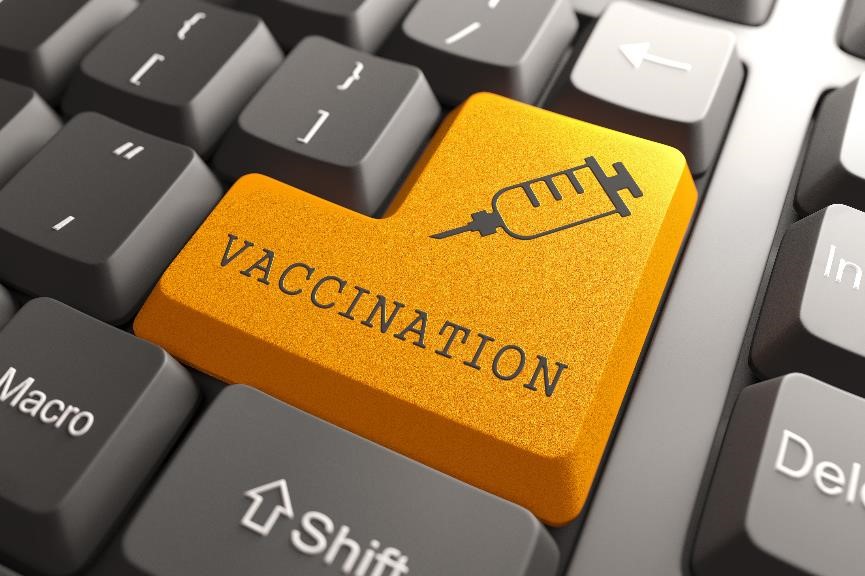| |
Vaccination for Seasonal Influenza
|
 |
Influenza Viruses
|
| Seasonal Influenza ("flu") is an acute respiratory infection caused by influenza viruses. Outbreaks occur globally and are primarily transmitted through respiratory droplets. Common symptoms include malaise, acute febrile illness, runny nose, coughing, headache, muscle aches and sore throat. In severe cases, complications such as respiratory failure or death may occur. |
| |
| There are three main types of influenza viruses known to infect humans: A, B and C. In Hong Kong, influenza is usually more common during two periods: from January to March/April and from July to August. |
| |
 |
The classification and naming of influenza viruses follow guidelines established by the World Health Organization (WHO). Type A influenza viruses are further categorized into subtypes based on two surface antigens: haemagglutinin (H) and neuraminidase (N). Type B influenza viruses are not classified into “H” and “N” subtypes but are divided into distinct lineages: B/Yamagata or B/Victoria lineage. |
| |
| Influenza viruses undergo constant genetic changes. Each year, the WHO will convene to review surveillance data and recommend the composition of influenza vaccines for the upcoming influenza season. Due to differences in the timing of influenza season between Northern Hemisphere and Southern Hemisphere, the WHO provide separate recommendations for each region. |
| |
|
For the Northern Hemisphere, the WHO normally announces the recommended strains in February/March, allowing sufficient time for vaccine production ahead of the winter influenza season, which usually starts at the end of the same year. For the Southern Hemisphere, the recommended strains are generally announced in September, in preparation for the winter influenza season around June or July of the following year.
|
 |
| |
|
A typical WHO recommendation includes formulations for both trivalent and quadrivalent vaccines. The trivalent vaccine generally comprises two Influenza A virus strains - one H1N1 subtype and one H3N2 subtype, and one Influenza B virus strain. The quadrivalent vaccine includes an additional influenza B virus strain from the alternate lineage.
|
| |
|
These recommendations are based on global surveillance and monitoring system that track circulating influenza strains, as well as assessments of vaccine effectiveness from the previous season. Following the WHO’s announcement, vaccine manufacturers begin production in accordance with the recommended strains. The WHO’s guidance is a critical component in global public health efforts to mitigate the impact of seasonal influenza.
|
|
▲ back to top
Constant Updating of Vaccine Strains
|
|
Influenza viruses undergo frequent and rapid changes. On the surface of these viruses are antigens, which function like "fingerprints" that help the human immune system recognize and combat the invading organism. These antigens are essential for identifying virus strains.
|
| |
|
In nature, virus antigens are prone to alteration, giving rise to new virus variants that can affect the community. Most of these changes are relatively minor and are referred to as antigenic drift. However, when a major change occurs, known as antigenic shift in that it can lead to the emergence of a significantly different virus, potentially resulting in an influenza pandemic (a global outbreak). This ongoing evolution is the primary reason why influenza vaccine strains must be updated regularly.
|
| |

|
Prevention is better than cure. Influenza infection often strikes suddenly and can be severe. To defend against such attacks, the human body needs to produce sufficient antibodies, comparable to soldiers in the immune system. Vaccination serves a proactive measure to help the body build immunity against constantly evolving influenza viruses.
Therefore, it is strongly recommended to receive an annual influenza vaccination. Immunization provides prior protection, reduces the risk of severe illness, and helps prevent serious complications and death associated with influenza infection.
|
|
▲ back to top
Vaccine Choices
|
|
There are three types of influenza vaccines currently registered and recommended
for use in Hong Kong by the Scientific Committee on Vaccine Preventable Diseases: |
|
(a) |
Inactivated Influenza Vaccine (abbreviated: IIV) - administered by injection
The inactivated influenza vaccine (IIV) is formulated using influenza viruses that have been inactivated (killed) during the manufacturing process.
|
| |
| (b) |
Recombinant Influenza Vaccine (abbreviated: RIV) - administered by injection
The recombinant influenza vaccine (RIV) is produced without the use of influenza viruses or chicken eggs. Instead, it contains haemagglutinin- a surface protein of the influenza virus that is produced by recombinant technology.
|
As a result, neither IIV nor RIV is capable of causing influenza.
|
(c) |
Live-attenuated Influenza Vaccine (abbreviated: LAIV) - administered as a nasal spray
The live-attenuated influenza vaccine (LAIV) contains weakened (attenuated) influenza viruses that have been processed to prevent them from causing influenza illness in immunocompetent individuals.
|
|
|
▲ back to top
Vaccination : Who and When ?
|
|
|
Influenza vaccination is recommended for all individual aged 6 months or above, except those with known contraindications. It is particularly important for those at higher risk of infection or complications, such as elderly, children, pregnant women, patients with chronic illness (such as the heart, lung, kidney disease, metabolic disease and immune insufficiency), healthcare providers, poultry workers, pig farmers and other people whose job renders them at higher risk of contracting influenza. In addition, residents of residential care homes for the elderly or persons with disabilities, as well as individuals with obesity (i.e. those with a Body Mass Index (BMI) value ≥ 30), are also advised to get vaccinated due to their increased risk of complications from influenza.
|
 |
| |
|
It is advisable to receive the influenza vaccine before the onset of the winter influenza season. Adequate time should be allowed for the body to develop immunity, which typically takes about two weeks after vaccination.
|
| |
|
For children aged 6 months to under 9 years receiving the influenza vaccine for the first time, a second dose is required. The second dose should be administered at least four weeks after the initial dose, based on the vaccination schedule by a healthcare professional.
|
| |
Inactivated Influenza Vaccine (IIV)
IIV is administered by injection and is generally indicated for individuals aged 6 months or older, depending on the specific brand. It should not be used in individuals with known contraindications to the vaccine.
|
| |
Live-attenuated Influenza Vaccine (LAIV)
LAIV is administered as a nasal spray and is indicated for individuals aged 2 years to 49 years. However, it should not be administered to individuals, with any of the following conditions:
|

|
|
(a) |
History of severe allergic reaction to any vaccine component or after previous dose of any influenza vaccine; |
| (b) |
Children and adolescents receiving concomitant aspirin or salicylate-containing therapy; |
| (c) |
Children aged 2 to 4 years who have asthma or who have had a history of wheezing in the past 12 months; |
| (d) |
Individuals who are immunocompromised; |
| (e) |
Close contacts and caregivers of severely immunosuppressed individuals who require a protective environment; |
| (f) |
Pregnant women; and |
| (g) |
Individuals who have taken influenza antiviral medications within the previous 48 hours. |
|
| |
Recombinant Influenza Vaccine (RIV)
RIV is administered by injection and is indicated for individuals aged 18 years or above, except for those with known contraindications.
|
|
▲ back to top
Precautions and Side Effects for Influenza Vaccines
|
|
Individuals with a known history of severe hypersensitivity to a previous dose of the influenza vaccine or any of its components should not receive the vaccine. The components of each specific vaccine are listed in the respective product leaflets and should be reviewed prior to administration.
|
| |
Adverse Effects of the IIV
Following administration of the IIV, some individuals may experience the following side effects:
|
| |
|
Location |
Description |
Frequency |
|
Injection Site
|
pain
|
very common
|
|
redness, swelling and hardening
|
common
|
|
pruritus
|
uncommon
|
|
Generalized
|
muscle pain, fatigue
|
very common
|
|
fever, headache, sweating, shivering, joint pain, bowel discomfort (e.g. nausea, vomiting, diarrhoea, abdominal pain)
|
common
|
|
dizziness
|
uncommon
|
|
Generalized
|
Anaphylaxis,
Guillain-Barré Syndrome (GBS),
Oculo-respiratory Syndrome (ORS)
|
very rare
|
|
| |
Very common |
(≥1/10) |
| |
Common |
(≥1/100 to <1/10) |
| |
Uncommon |
(≥1/1,000 to <1/100) |
| |
Rare |
(≥1/10,000 to <1/1,000) |
| |
Very rare |
(<1/10,000) |
|
| |
| For individuals such as children, who have never received the influenza vaccine before, fever, muscle aches and general discomfort may occur. These symptoms typically appear within 6 to 12 hours after vaccination and generally last for 1 to 2 days. If fever or discomforts persists, it is advisable to consult your doctor for further evaluation.
|
| |
| Rare but serious allergic reactions, such as hives, swelling of the lips or tongue, and difficulty in breathing, which require immediate emergency medical attention.
|
| |
Adverse Effects of the LAIV
The most common side effects following administration of LAIV include: runny or stuffy nose (in individuals of all ages); fever (particularly in children); and sore throat (primarily in adults). These side effects are generally mild and self-limiting.
|
| |
|
Location |
Description |
Frequency |
|
Localized (nose)
|
runny or stuffy nose
|
very common
|
|
nose bleed
|
uncommon
|
|
Generalized
|
reduced appetite, weakness, irritability, headache
|
very common
|
|
fever, sore throat, cough, muscle pain, chills
|
common
|
|
rash, allergy
|
uncommon
|
|
Generalized
|
severe allergic reactions (e.g. swelling of the face and tongue, shortness of breath),
Guillain-Barré Syndrome
|
very rare
|
|
| |
Very common |
(≥1/10) |
| |
Common |
(≥1/100 to <1/10) |
| |
Uncommon |
(≥1/1,000 to <1/100) |
| |
Rare |
(≥1/10,000 to <1/1,000) |
| |
Very rare |
(<1/10,000) |
|
| |
| Children and adolescents aged between 2 and 17 years should not take medications containing aspirin or salicylates for at least 4 weeks following administration of LAIV, due to the risk of developing a rare but serious condition known as "Reye’s Syndrome".
|
| |
Adverse Effects of the RIV
Following administration of RIV, some individuals may experience the following side effects:
|
| |
|
Location |
Description |
Frequency |
|
Injection Site
|
local pain
|
very common
|
|
swelling, redness
|
common
|
|
pruritus
|
uncommon
|
|
Generalized
|
headache, fatigue, muscle pain, joint pain
|
very common
|
|
nausea, fever, shivering/chills
|
common
|
|
cough, oropharyngeal pain, diarrhoea, dermatitis, rash, flu-like symptoms
|
uncommon
|
|
dizziness, urticaria
|
rare
|
|
anaphylactic reaction, Guillain-Barré Syndrome
|
frequency not known
|
|
| |
Very common |
(≥1/10) |
| |
Common |
(≥1/100 to <1/10) |
| |
Uncommon |
(≥1/1,000 to <1/100) |
| |
Rare |
(≥1/10,000 to <1/1,000) |
| |
Very rare |
(<1/10,000) |
| |
Frequency not known (adverse reactions from post-marketing experience; cannot be estimated from the available data) |
|
| |
Allergic Reactions
Egg Protein (Ovalbumin):
Influenza vaccines have been manufactured using egg-based processes for over 70 years. This method has the advantage of producing vaccines with well-established safety and efficacy. However, individuals with an egg allergy are advised to consult their doctor before vaccination. Although only trace amounts of residual egg protein may remain in the vaccine, these can potentially trigger allergic reactions. That said, the residual amount is extremely low and is often well tolerated by most individuals. Please inform your doctor if you have a known allergy to eggs.
|
| |
Thiomersal and Aluminium Salts
Thiomersal, is a mercury-based preservative commonly added to multiple dose vaccines. It is not used in single-dose vaccines or in live-attenuated influenza vaccines. Aluminum salts are sometimes used as an adjuvant in certain vaccines to enhance the immune response.
The seasonal influenza vaccines currently available in Hong Kong are single-dose preparations and do not contain thiomersal or aluminium.
Note: The information provided above may not cover all possible side effects, allergic reactions, adverse effects or precautions.
|

|
|
|
▲ back to top
|
(a) |
Follow the vaccination schedule recommended by your doctor. It is advisable to receive the influenza vaccine before the start of each influenza season; |
| (b) |
In addition to vaccination, maintaining good personal hygiene is essential to prevent influenza:
- Wash hands frequently with liquid soap and water, especially before touching your mouth, nose, or eyes, and after touching public surfaces such as door handles or handrails; and
- If soap and water are not available and hands are not visibly soiled, use a 70–80% alcohol-based hand rub as an effective alternative.
|
 |
| (c) |
Ensure good indoor ventilation. During periods of increased influenza activity:
- Avoid crowded or poorly ventilated public places.
- High-risk individuals should consider wearing surgical masks in such environments.
|
| (d) |
Maintain a healthy lifestyle:
- Eat a balanced diet.
- Exercise regularly.
- Get adequate rest.
- Avoid smoking and manage stress levels.
|
| (e) |
Be considerate to others:
- Cover your nose and mouth with a tissue when coughing or sneezing.
- Dispose of used tissues in a lidded bin.
- Wear a surgical face mask if you develop respiratory symptoms.
|
|
Aside from influenza, there are also other influenza-like illnesses (ILI) that are transmissible. Remember to seek medical advice for proper diagnosis and treatment. More details on influenza and other readings are also accessible via the Centre for Health Protection website.
|
|
▲ back to top
Communication with Your Doctor
|
Before receiving the influenza vaccine, please inform your doctor of the following:
- Current Illness: If you have a fever or have recently recovered from an infection, it may be advisable to delay vaccination until you have fully recovered.
- Allergies: If you are allergic to any substances, inform your doctor of the specific allergens. This will help determine whether you can safely receive the vaccine.
|
| |

|
Specific Medical Considerations
- Inactivated Influenza Vaccine (IIV) and Recombinant Influenza Vaccine (RIV):
If you have a bleeding disorder or are taking blood-thinning medications, consult your doctor before receiving the injection.
- Live-attenuated Influenza Vaccine (LAIV):
Inform your doctor before receiving the injection if you:
-
Have experienced recent wheezing or have a history of asthma
-
Have chronic health conditions such as diabetes, heart, kidney, or lung disease
-
Have a weakened immune system
- Concurrent Medications:
-
Please discuss any ongoing medications with your doctor prior to receiving the vaccination.
- Pregnancy:
Inform your doctor if you are pregnant. The Live Attenuated Influenza Vaccine (LAIV) should not be used in pregnant woman.
|
|
▲ back to top
Appearance and Form of Influenza Vaccines
|
|
Influenza vaccines are pharmaceutical products that must be registered with the Pharmacy and Poisons Board of Hong Kong before being sold or distributed locally. Each registered vaccine will display a Hong Kong Registration Number in the format HK-XXXXX (five digits) on its packaging.
|

|
| |
You may verify the registration of a vaccine using the "Search Drug Database" function on the official website of the Pharmacy and Poisons Board:
 Search Drug Database Search Drug Database
|
| |
|
Note: Influenza vaccines are classified as prescription-only medicines in Hong Kong.
|
| |
Forms of Influenza Vaccines Registered in Hong Kong
- Inactivated Influenza Vaccine (IIV)
- Form: Liquid suspension
- Route: Intramuscular and/or subcutaneous injection (most commonly intramuscular)
- Packaging: Usually in single-dose pre-filled syringe
- Available types: Trivalent (2 Influenza A + 1 Influenza B virus strain) and Quadrivalent (2 Influenza A + 2 Influenza B virus strains)
- Live Attenuated Influenza Vaccine (LAIV)
- Form: Liquid suspension
- Route: Intranasal spray
- Packaging: Single-dose pre-filled sprayer
- Available types: Trivalent and Quadrivalent
- Recombinant Influenza Vaccine (RIV)
- Form: Solution
- Route: Intramuscular injection only
- Packaging: Single-dose pre-filled syringe
- Available types: Trivalent and Quadrivalent
|
|
▲ back to top
Storage and Shelf-life
|
|
Influenza vaccines must be stored and transported under refrigerated conditions between 2°C and 8°C. Do not freeze the vaccines. Vaccines that have been frozen should be discarded immediately.
|
| |
|
Vaccines that have been stored outside the recommended temperature range must not be used, as improper storage can compromise their potency and effectiveness.
|
 |
|
▲ back to top
|
|
Acknowledgement : The Drug Office would like to thank the Centre for Health Protection (CHP) and the Professional Development and Quality Assurance (PD&QA) for their valuable contribution to the preparation of this article.
|
|
|
|
|


